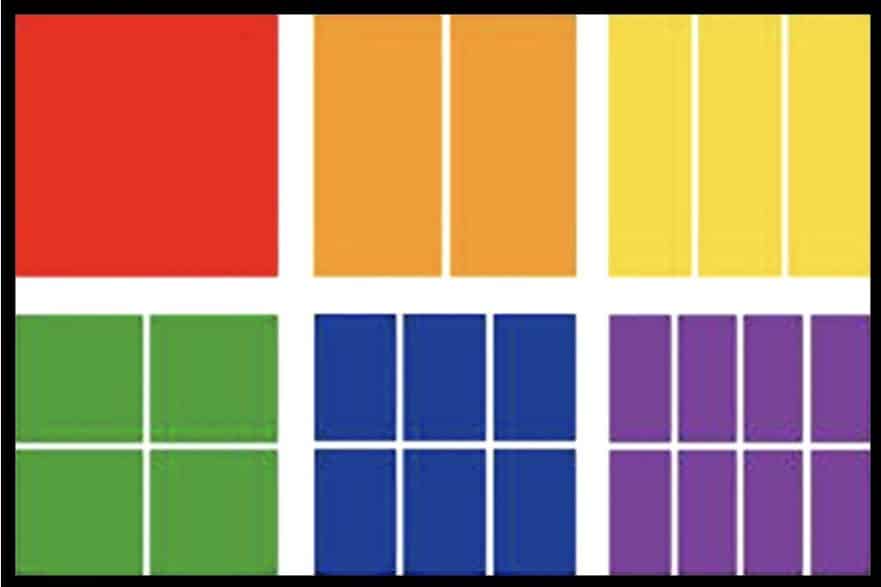Same or Different? activities are opportunities for our children to focus their thinking on a desired mathematical concept. These tasks strengthen communication, reasoning and constructing arguments in relation to mathematical ideas.
***************************
Same or Different?
FLOWER POWER
 Look at the two pictures. What do you notice?
Look at the two pictures. What do you notice?
1. Talk about how pictures A and B are the same. How are they different?
– A and B are the same because …
– A and B are different because
Create a new picture of a flower using shapes.

Flower Outline pdf
You can use the outline above to create your design by drawing or using pattern blocks.
Describe your flower.
~~~~~~~~~~~~~~~~~~~~~~
Suggestions for guiding a discussion…
-
A and B are the same because they’re both pictures of flowers made of shapes. They both have 20 pieces. If you placed one on top of the other, I think they’d match each other. They’re the same size and shape. They’re the same height, too. Both flowers have green stems and a yellow center. They both look like they are made out of the pattern blocks we have at school.
-
A and B are different because they use different shapes to make the flower. A doesn’t have any hexagons or rhombuses (diamonds), but B does. The flower petals in A are red trapezoids, but in B they’re orange and they’re different shapes. In A, the middle is 6 triangles, but in B the middle is 1 big hexagon. A uses 12 pieces to make the top of the flower and B uses 13. A uses 8 pieces to make the stem and leaves, and B uses 7. If you wrote that in numbers you have two ways to show 20: 12 + 8 = 20 and 13 + 7 = 20.
******************************
Same or Different?
WOODEN BEADS
Look at the two pictures. What do you notice?

What is mathematically the same about pictures A and B, and what is different?
– A and B are the same because …
– A and B are different because …
Create a third picture of some beads.
How is your picture is the same as pictures A and B, and how it is different?
 Look at the two pictures. What do you notice?
Look at the two pictures. What do you notice?


